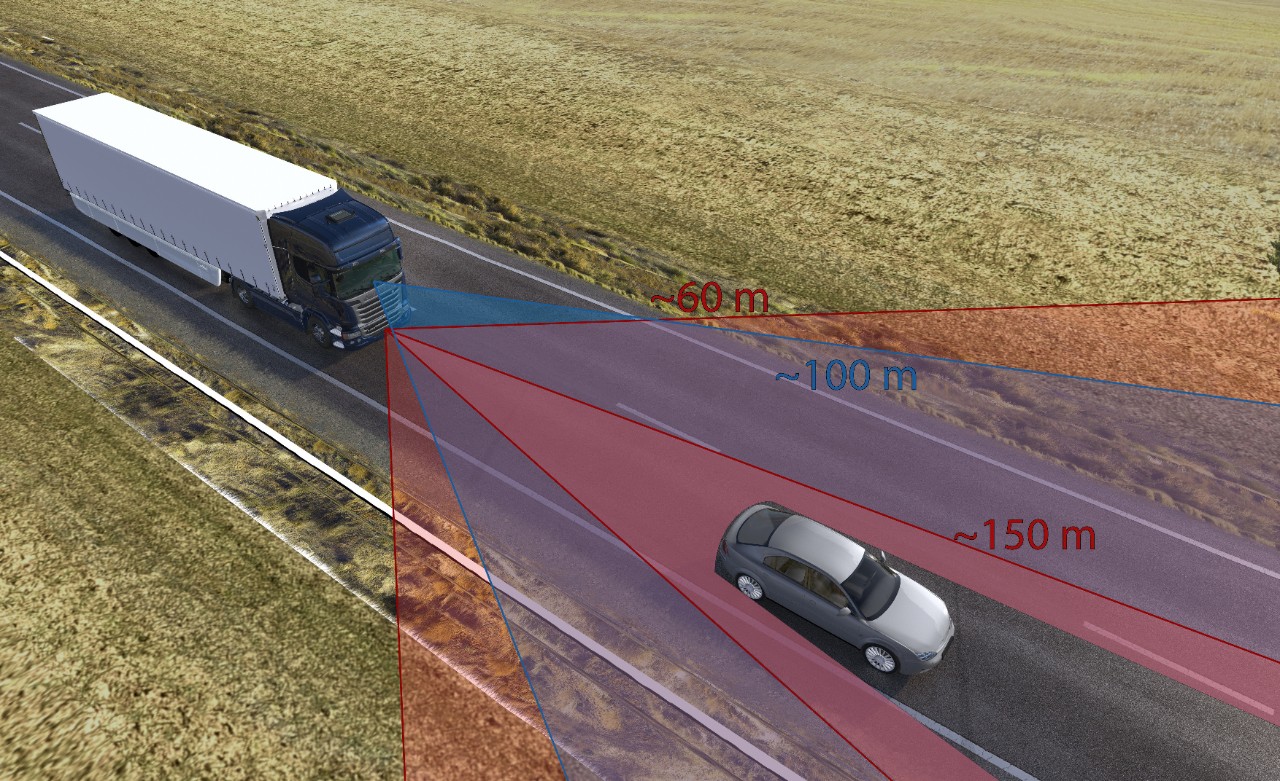
Using Technology to Enhance Road Safety
04 DECEMBER 2020
At Scania, keeping drivers safe is paramount, and we continuously work to improve the safety of our vehicles for our customers drivers and their fellow road users. Scania vehicles are engineered to assure drivers that they are in good hands every time they get into their vehicles, by making driving the vehicle as secure as possible, with the aim of minimising road risks, collisions and other incidents that could lead to injury. Active safety is centred around giving the driver better feedback and control, and our objective is to constantly work at improving visibility, handling, braking and stability of our vehicles.
To help improve driver safety and accident prevention, the Scania Safety Package has been introduced in East Africa as an additional safety measure in our trucks that will give drivers better feedback, control, improve road safety and reduce the risk of collisions. The Scania Safety Package comprises of four safety systems: Advanced Emergency Braking (AEB), Adaptive Cruise Control (ACC), Scania Lane Departure Warning (LDW), and Scania Alcolock. “We are introducing the Scania Safety Package to our customers as an additional safety measure in reducing the risk of collision. Road safety is important to us and we want to continue doing our part by offering our customers transport solutions that will help in reducing road carnage and fatalities on our roads,” explains Mohamed Ebrahim, Sales Manager, Scania East Africa.
These safety measures are aimed at also protecting the customers investment and avoiding the high costs incurred from accident repairs, and the downtime when the vehicle is off the road. “We want our customers to maximize the uptime of their vehicles and spend less time at the workshop. Accident repair costs are also costly, and we want to help our customers save on such costs, and increase their profits in growing and expanding their businesses,” Mohamed adds on.
The Scania Safety Package has initially been rolled out for the truck range, with the plan of incorporating the safety package in our bus range in the near future. “We are hoping that there will be lots of interest amongst our customers with the safety package, for it to eventually become a standard feature in our product offering,” an optimistic Mohamed says.
Advanced Emergency Braking (AEB)
AEB is a sophisticated braking system that uses a camera and radar to register what is happening in front of the vehicle, to reduce the risk and effect of rear end collisions. The system senses objects in front of the vehicle, and measures the distance between the object and the truck in real-time. The system is active at speeds over 15kph, and is activated when it detects a potential risk of a collision. The purpose of the system is, as far as possible, to prevent a collision with the vehicle in front.
Adaptive Cruise Control (ACC)
ACC is a comfort enhancement function that helps the driver to check the time gap to the vehicle in front. A warning appears on the dashboard when the gap to the vehicle in front is too small, and an audible signal is also activated unless the driver takes action. Adaptive cruise control can be activated at speeds above 20km/h, and the system will never request a higher speed than the speed set in the cruise control. ACC will also help in reducing fuel consumption and the wear and tear of friction parts.
Scania Lane Departure Warning (LDW)
Scania's lane departure warning is a safety system where the driver receives an early warning that the vehicle is about to unintentionally leave its lane. A distinct sound is heard on the right or left-hand loudspeaker, depending on the side of the vehicle crossing the lane marking. The system consists of a camera that reads the lane markings and is active at speeds above 60 km/h, and is deactivated if the driver uses the indicators, or during active driving when the steering wheel is being turned repeatedly.
Scania Alcolock
Scania Alcolock has been added on the trucks for sobriety checks. The alcolock requires the driver to breathe through a mouthpiece when starting the engine, and if alcohol is detected in the exhaled air, the starter will remain locked. Ensuring that drivers are not drunk-driving, protecting the driver and other road users.
It is important to note that these safety measures are additional tools to support the drivers, and that it is always the driver who is responsible for keeping a safe distance to the vehicle ahead, being alert at all times, not over-speeding, not drunk-driving and not texting while driving. Road safety is a collective responsibility, and we must all do our part in protecting ourselves and other road users.